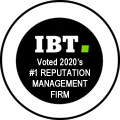Penguin Refresh calls for a Content Refresh: Rules for On-Site Optimization
Sara Klemowitz, July 17, 2013
Recent SEO news has been heavily focused on off-site content, such as the seemingly unending war that's currently going on between people who think we still need to focus a lot of energy into linkbuilding efforts, their opponents who think it's time to lay it to rest, and those who are steadfast proponents of the notion that it's a profoundly mediocre SEO tactic. The recent (but, arguably, pretty mild) Penguin 2.0 update can probably do all the explaining as to why SEO enthusiasts are discussing social media, guest blogging, and, well, everything BUT on-site content in their recent contributions to the community, but we can't let the importance of having well-optimized on-site content slip through the cracks.
 Since Penguin 2.0 did introduce some important changes, that should probably be rule number one: Don't neglect your on-site content! You should be refreshing this stuff relatively frequently, especially, of course, if any of the information changes. There's speculation that frequently-updated sites are better kept on Google's radar, so that never hurts.
Since Penguin 2.0 did introduce some important changes, that should probably be rule number one: Don't neglect your on-site content! You should be refreshing this stuff relatively frequently, especially, of course, if any of the information changes. There's speculation that frequently-updated sites are better kept on Google's radar, so that never hurts.
More specifically, stay on top of your keyword usage. Something I've seen all too often is webmasters who think they need to use their keywords in their exact forms as the anchor text for their links, and this is actually pretty punishable behavior. If your keyword is "lawn care New Jersey," do yourself a favor and include a few stop-words to make that keyword sound more natural. Doesn't "lawn care here in New Jersey" just sound easier to fit in a sentence?
In addition to that, make sure you're varying your anchor text. Don't target the same exact keywords over and over again on the same page – Google now sees this as spammy. A good way to switch up similar keywords is by branding them (Sprinkler King's New Jersey lawn care).
During your content refresh, always do some thorough proofreading. You can never have enough proofreading. It might sound like common sense, but in my few years' experience in SEO writing, I've seen a shameful number of pages that have spelling, grammar, and syntax errors…right on the company page. Not only will that make a visitor question your company's authenticity, it'll be a red flag to Google, too, since spam content is usually similarly low-quality. This is why the person writing your on-site content should never be just a writer or just an SEO expert – it should be someone who is well-trained in both, or two experts working side-by-side.
A lot of webmasters also have a hard time resisting the urge to ignore their e-commerce pages. It makes little sense – product descriptions are easy to optimize, but if they go neglected, they can easily account for duplicate content. Take advantage of your ability to optimize your e-commerce; it's like free SEO real-estate on your website!
And, finally, don't get too link or strong-tag happy. When a site visitor is just trying to get some basic info, it's distracting when every other word is bolded or linked. Let the keywords come naturally and don't put a crazy emphasis on them for a better experience.
So, your homework for today is to go home and refresh your content to make it Penguin 2.0-friendly!





